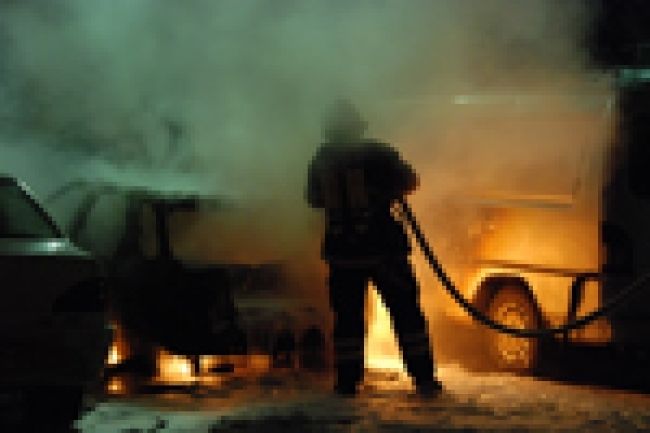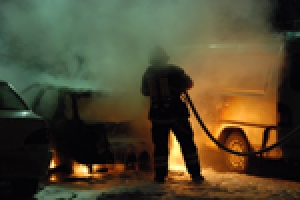
Public Safety and Our First Responders

The threat of high-voltage electrical contact is very real for emergency first responders who are called to the scenes of accidents and other unplanned events. The safety of the public and our emergency workers should be a top priority.
“You fight the fires, we deal with the wires” is a theme that is stressed in the comprehensive outreach program created by NSTAR, a Northeast Utilities company based in Boston. Contacting the utility company first, before any actions are taken by responders, is essential when dealing with an invisible force that travels at 186,000 miles per second. If you make a mistake at the office, you can use an eraser or the delete key to correct it. In the field, there is no forgiveness and a split-second error in judgment will likely lead to an irreversible result.
Comprehensive Outreach
NSTAR developed its outreach program to help first responders make immediate safety decisions at a variety of scenes including fires involving electrical equipment, vehicle-to-pole collisions and downed wire situations. The program is unique in that NSTAR connects one-on-one with all municipal department personnel in its service territory regarding specific duty shifts that cover all line officers and other personnel. NSTAR made this commitment to develop stronger ties with the community and to ensure the proper information is directly delivered to those who protect and serve.
Scheduling can pose a challenge, but by working closely with fire and police chiefs and training officers, NSTAR employees and first responders are able to select and agree upon outreach program dates and times that work for everyone involved. However, due to the nature of a first responder’s job, flexibility is often required on the part of the utility company. I have sat in public safety buildings for extended periods of time waiting for responders to return from emergency calls. Appreciation for their commitment goes a long way with these workers and further engenders attention to the topic.
Due to the strong cultural setting found in fire and law enforcement departments, getting the attention of the entire group is critical to being effective. From the start, we discuss first responders’ inclination to attempt to quickly mitigate a situation and perform emergency lifesaving duties. As a former firefighter, I went through intense training and can relate to that instinctive reaction.
High-Impact Multimedia
Part of the outreach program includes showing a 20-minute video presentation professionally crafted by NSTAR. It was shot using real police and fire crews who identify the dangers of step potential, demonstrate the use of conductive extinguishing agents and heighten awareness of other potential traps not normally considered at an emergency scene. In one video scene, police officers arrive at an emergency site where wires have fallen on a vehicle with occupants trapped inside. One of the officers calls for other responders as well as the utility company. The sooner the utility company is aware of the matter, the sooner its employees can take appropriate action to make the situation safe. It is crucial to call the utility as soon as possible in situations where the public is impacted by energized equipment.
NSTAR stresses to outreach program participants that the human body is conductive and that any object given a high enough voltage can also be conductive, including guardrails, painted lines on a road and the ground itself. The company also stresses that approaching the scene from a safe distance is valuable to avoid both step potential and accidental contact. Police batons, Halligan tools and other seemingly insulated public safety equipment are not dielectrically rated and are not suitable for moving energized wires on the ground. Further, myths of rubber soles being complete insulators in situations of very high voltage are debunked since typical voltages often exceed the ratings of service boots and footwear.
A multimedia presentation is reviewed after the video is shown. The presentation includes an instructor-led discussion of the principles of electricity, a complete discussion of the power system that covers generation and transmission towers, and an intense focus on pole-top distribution construction. Sadly, response personnel across the country sometimes confuse a primary or secondary conductor for a telecommunication cable. As you can imagine, these instances lead to tragic outcomes. In all cases, outreach program instructors emphasize that a downed wire must be presumed energized unless tested and verified as de-energized by qualified workers. Additionally, transformer, meter and substation equipment is studied and the dangers surrounding making contact are specifically highlighted.
Firefighting
Pole-top transformers can pose a significant risk if water is used in an attempt to extinguish a fire. First, water is conductive. There have been times when a live phase has parted off an insulator and fallen in proximity to on-scene personnel. Second, the transformer itself contains mineral oil that is often the fuel for a fire. Should the device explode, flaming oil would be strewn all over the water on the ground, causing a spreading secondary fire that would require the use of extinguishing foam. Protecting the surrounding structures makes sense and letting the device burn clear may be the best option. NSTAR continually underscores to all first responders that no action should be taken until the utility company indicates it is safe to do so. All it takes is communication with the utility’s command center.
Distribution Automation
NSTAR has a robust distribution automation system to isolate circuits. When a lifesaving event occurs, fire and police officers directly call our dispatch center via a dedicated imminent danger hotline number classified as an FPS 1, which stands for fire/police/safety priority 1.
We instruct on-scene emergency personnel who call the hotline number to identify the city or town and a very specific area where the emergency is located. NSTAR dispatchers repeat the information to the caller to ensure it is accurate. At times utility personnel may ask for pole numbers or specific addresses. Control center personnel will repeat and verify again, and then locate control points and lock-open remote switching devices to de-energize the scene.
After the area is de-energized, line crews go to the scene to secure and repair damage and restore service. Emergency personnel appreciate the ability to safely take action in short order to deal with a crisis. Of course, the on-scene command is required to stay in contact with dispatch center personnel to maintain the highest level of coordination at the scene.
NSTAR also allows direct calls into system dispatch for downed wires that block roads and for unstable pole conditions. These are considered serious conditions that are quickly responded to by utility crews.
Basics to Remember
Contractors have the greatest opportunity to make accidental contact with overhead lines and impact buried conductors with underground dig-ins. Explaining to responders that the body is 70 percent water and 30 percent carbon is a sobering reminder that making contact with energized construction equipment can be disastrous.
If a police cruiser or fire apparatus – generally aerial ladders – makes accidental contact, it can provide an opportunity to create a path to ground. Teaching first responders to jump clear and shuffle away to avoid different potentials is necessary to protect the responders. The same holds true for conscious accident victims.
Live-Line Trailer Demonstration
NSTAR has constructed a distribution trailer complete with a pole, phases and transformers. At regional events, we use qualified workers to demonstrate the awesome power of electricity and the dangers associated with high voltage. Audience members often jump when we intentionally create a fault, causing a fuse to fail. Using practical visual devices helps to make the theory a reality for most people.
Working together with our community improves safety and coordination in an unplanned incident. Investments in safety are necessary for everyone’s well-being.
About the Author: George R. Popovici, CUSA, CUSP, is a senior safety engineer at NSTAR, a Northeast Utilities company. During his 29-year safety career, his responsibilities have included corporate safety program development, industrial hygiene, statistical benchmarking and OSHA outreach training. Popovici is a professional member of the American Society of Safety Engineers and a member of the Edison Electric Institute safety and health committee.

